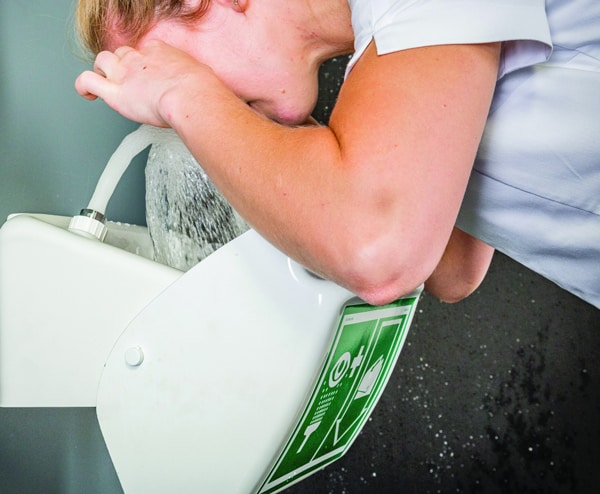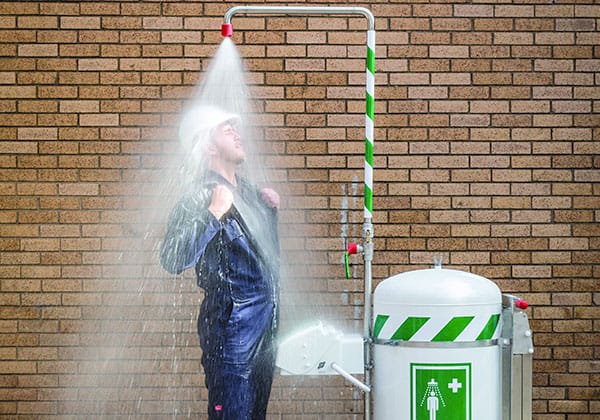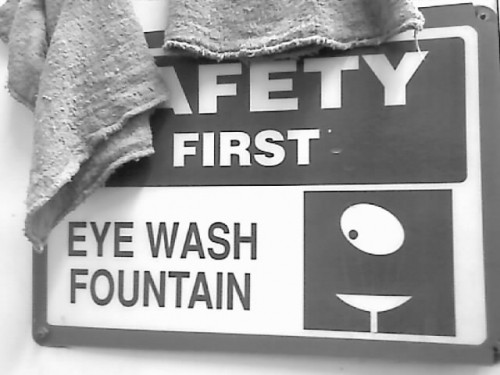Eye safety is a crucial aspect of workplace safety that often goes overlooked. Ensuring that employees are protected from eye injuries not only helps maintain their health and well-being but also improves productivity and reduces medical costs. In this article, we’ll explore how to implement effective eye safety policies and procedures that comply with eye safety regulations.
Understanding Eye Safety Regulations
Eye safety regulations are set by various organizations to ensure that workplaces provide adequate protection for their employees. These regulations are designed to minimize the risk of eye injuries and ensure that appropriate protective measures are in place.

Key Regulatory Bodies
Several regulatory bodies set eye safety standards, including:
- Occupational Safety and Health Administration (OSHA): OSHA sets and enforces standards to ensure safe and healthy working conditions.
- American National Standards Institute (ANSI): ANSI provides guidelines for the design and performance of eye protection equipment.
- National Institute for Occupational Safety and Health (NIOSH): NIOSH conducts research and makes recommendations for preventing work-related injuries.
OSHA Eye and Face Protection Standards
OSHA’s standards for eye and face protection are outlined in 29 CFR 1910.133. These standards require employers to provide suitable eye protection to employees exposed to hazards such as flying particles, molten metal, chemicals, and harmful light radiation.
Assessing Workplace Eye Safety Risks
Before implementing eye safety policies, it’s essential to assess the specific risks present in your workplace. This assessment helps identify the types of hazards that employees may encounter and the appropriate protective measures to mitigate these risks.
Common Eye Hazards
Some common eye hazards in the workplace include:
- Flying particles: Dust, metal shavings, and other debris can cause eye injuries.
- Chemical splashes: Exposure to hazardous chemicals can lead to severe eye damage.
- Radiation: Ultraviolet (UV) and infrared (IR) radiation can harm the eyes.
- Impact: Tools and equipment can cause blunt force trauma to the eyes.
Conducting a Risk Assessment
To conduct a comprehensive risk assessment:
- Identify hazards: List all potential eye hazards in the workplace.
- Evaluate risks: Determine the likelihood and severity of each hazard.
- Implement controls: Develop measures to eliminate or reduce risks, such as engineering controls, administrative controls, and personal protective equipment (PPE).
Developing Eye Safety Policies
Once you’ve assessed the risks, the next step is to develop eye safety policies that outline the procedures and protective measures employees must follow.
Creating a Written Policy
A written eye safety policy should include:
- Purpose and scope: Explain the importance of eye safety and the policy’s applicability.
- Responsibilities: Outline the roles and responsibilities of employers, supervisors, and employees.
- Hazard identification and assessment: Describe the process for identifying and assessing eye hazards.
- Protective measures: Detail the required PPE and other protective measures.
- Training and education: Specify the training requirements for employees.
- Emergency procedures: Outline the steps to take in the event of an eye injury.
Selecting Appropriate Eye Protection
Choosing the right eye protection is critical to ensuring employee safety. The type of protection needed depends on the specific hazards identified in the risk assessment.
Types of Eye Protection
Common types of eye protection include:
- Safety glasses: Protect against flying particles and minor impacts.
- Goggles: Provide a seal around the eyes to protect against chemical splashes and dust.
- Face shields: Offer full-face protection against impacts, chemical splashes, and radiation.
- Welding helmets: Protect against UV and IR radiation during welding operations.

Training and Educating Employees
Effective eye safety policies require proper training and education for all employees. Training ensures that employees understand the risks and know how to use protective equipment correctly.
Training Topics
Key topics to cover in eye safety training include:
- Hazard identification: Teach employees how to recognize eye hazards in the workplace.
- Proper use of PPE: Demonstrate how to wear and maintain eye protection equipment.
- Emergency response: Instruct employees on the steps to take in case of an eye injury.
- Regular updates: Provide ongoing training to keep employees informed about new hazards and protective measures.
Enforcing Eye Safety Policies
Creating policies and providing training are essential, but enforcement ensures that employees adhere to eye safety procedures consistently.
Monitoring and Compliance
Regularly monitor the workplace to ensure compliance with eye safety policies. Supervisors should conduct inspections and address any non-compliance issues promptly.
Disciplinary Actions
Establish clear consequences for failing to follow eye safety procedures. Disciplinary actions can include verbal warnings, written warnings, and, in severe cases, suspension or termination.
Responding to Eye Injuries
Despite preventive measures, eye injuries can still occur. Having a clear plan for responding to eye injuries ensures that employees receive prompt and appropriate care.
First Aid Procedures
In the event of an eye injury:
- Assess the injury: Determine the severity of the injury and whether it requires medical attention.
- Provide first aid: Rinse the eye with clean water or saline solution for chemical splashes. For foreign objects, avoid rubbing the eye and seek medical help.
- Seek medical attention: For severe injuries, transport the injured employee to a medical facility immediately.
Incident Reporting and Investigation
Report all eye injuries, regardless of severity, to the appropriate personnel. Conduct an investigation to determine the cause of the injury and implement corrective actions to prevent future incidents.
Continuous Improvement
Implementing eye safety policies is not a one-time task. Continuous improvement ensures that your eye safety program remains effective and adapts to new hazards and regulations.
Regular Reviews
Periodically review and update your eye safety policies and procedures. Solicit feedback from employees and supervisors to identify areas for improvement.
Stay Informed
Keep up-to-date with changes in eye safety regulations and industry best practices. Participate in safety workshops and training sessions to stay informed about new protective measures and technologies.
Conclusion
Implementing eye safety policies and procedures is essential for protecting employees from eye injuries and ensuring a safe workplace. By understanding eye safety regulations, assessing risks, developing comprehensive policies, providing training, enforcing compliance, and continuously improving your program, you can create a safer work environment for everyone.
Remember, eye safety is a shared responsibility. Encourage employees to take an active role in protecting their eyes and maintaining a culture of safety in the workplace.
Call to Action: Shop at Absorbents Online
As part of ensuring a safe workplace, investing in high-quality safety equipment is crucial. At Absorbents Online, you can find a wide range of eye protection products, from safety glasses to face shields, specifically designed to meet your safety needs. Protect your employees and enhance your eye safety policies by exploring our extensive collection. Visit Absorbents Online today and take the next step towards a safer work environment!



